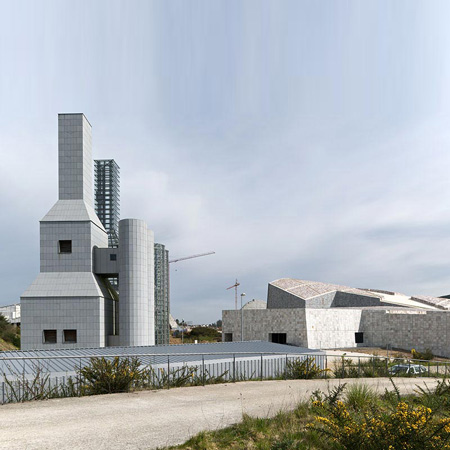
Cidade da Cultura de Galicia by Peter Eisenman
Photographer Iñigo Bujedo Aguirre has sent us his photographs of the Cidade da Cultura de Galicia by Peter Eisenman, nearing completion in Galicia, Spain.
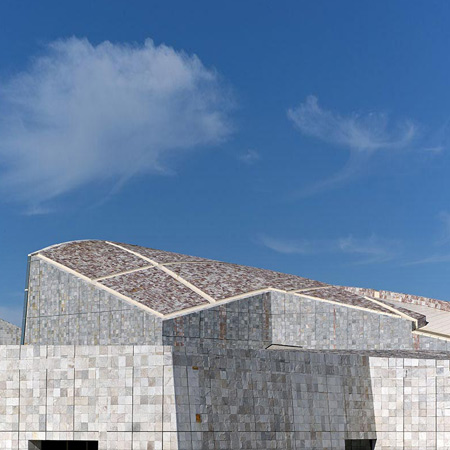
Due to open later this year, the project will incorporate a museum, library, archive facility, arts centre and performing arts centre.
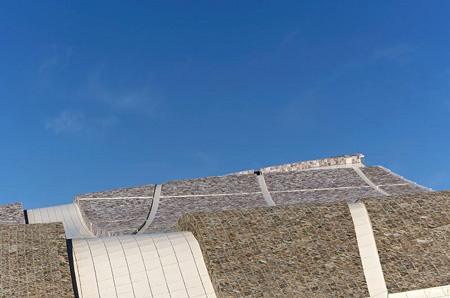
The buildings will be linked by five main pedestrian pathways leading to a central plaza, with 25 hectares of parkland surrounding the buildings.
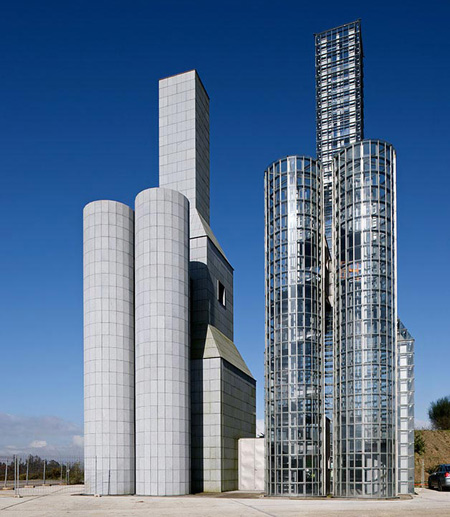
The grounds also incorporate two towers (above) originally designed in 1992 but never built by Eisenman's colleague, the late architect John Hejduk.
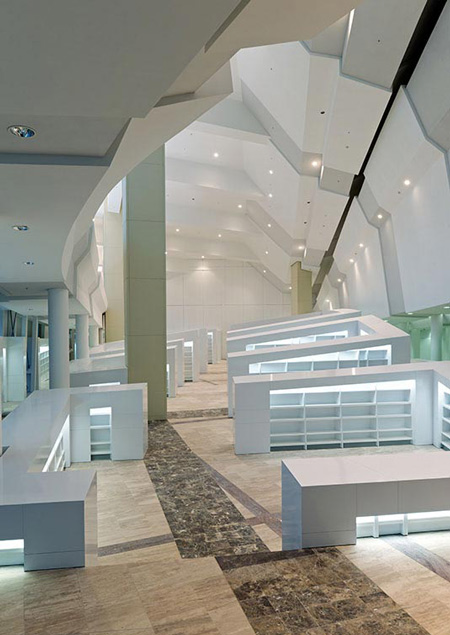
Photographs are copyright © Iñigo Bujedo Aguirre/VIEW
The information that follows is from the Foundation for the City of Culture of Galicia:
Situated in Santiago de Compostela, an emblem of European cultural tradition whose historic city has been declared a World Heritage Site by UNESCO in 1985, the City of Culture of Galicia rises on the top of mount Gaiás as a formidable architectural milestone for the new century.
Designed by the American architect Peter Eisenman to host the best of cultural expressions of Galicia, Spain, Europe, Latin America and the World, this new "city", inclusive and plural, shall contribute towards meeting the challenges of the information and knowledge society.
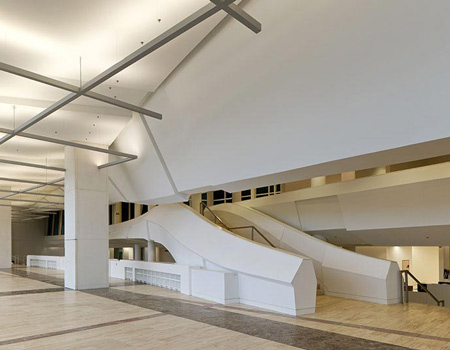
Its unique buildings, interconnected by streets and plazas equipped with state-of-the-art technology, make up a space of excellence for reflection, debate and actions orientated towards Galicia's future and internationalization.
Its spaces shall host services and activities devoted to the preservation of heritage and memory, the study, research, experimentation, production and dissemination in the field of literature and thinking, music, drama, dance, film, the visual arts, audiovisual creation and communication.
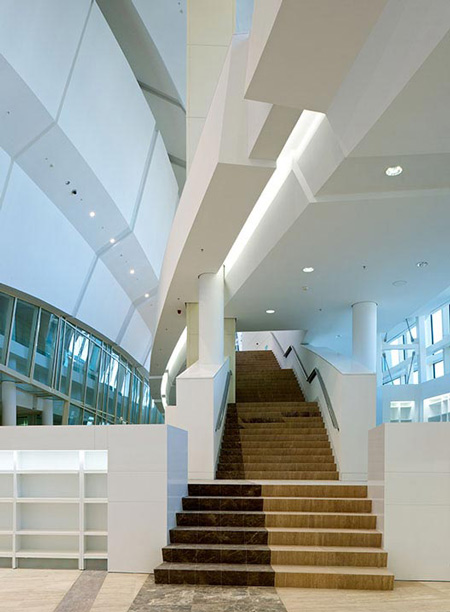
As a place for convergence and international projection, the City of Culture of Galicia shall revitalize in the 21st century the twofold vocation -voyager and hospitable- of Galician people, contributing from a cultural standpoint to the social and economic development of the land.
The Xunta de Galicia held in 1999 an International Architecture Competition to build the City of Culture of Galicia. Out of the eleven proposals submitted, the project designed by Peter Eisenman was finally chosen, according to the Jury's decision, for its singularity both in terms of the concept and of the art, as well as its exceptional match to the site.
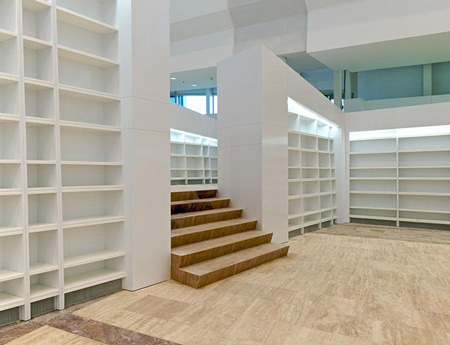
Galician Library
The Library of Galicia is due to open towards the end of 2010, designated as Galician Book and Reading Year, as well as being Xacobeo (the Holy Year of Saint James).
Destined to become the flagship of Galicia's library system, its mission is to assemble, preserve and disseminate Galicia's bibliographical heritage including all printed, sound, audiovisual and IT production. Likewise, it shall represent the Galician library system in Spain and before all international organizations, forums and platforms of the world of libraries.
It shall promote and disseminate Galician culture, enabling access to Galicia's bibliographical heritage, either in person or virtually, and it shall be a key element for any cultural activity related to books, reading and libraries. In this framework, special funds shall be allocated to promote literature in Galician language for children and youths, enhancing its value and cultural diversity.
Both the general public and professionals shall have access to relevant information for cultural and educational uses.
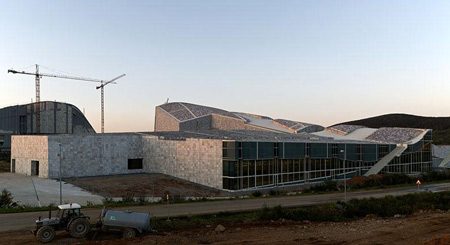
Galician Archives
The Galician Archives, situated in a building adjacent to the Library of Galicia, shall also open to the public towards the end of 2010.
Destined to become the flagship and center of reference for Galicia's archive system, its mission is to receive, keep and render available to citizens all public or private documents in any type of format (paper, video, photographs, audio, etc.) that should be preserved due to their value.
By virtue of its dual nature: administrative and historical-cultural, it shall also keep the documents issued by the activities of the Xunta de Galicia and its dependencies, ensuring access for citizens both at the facilities as well as via the Internet.
By managing the documentary heritage, the Galician Archives shall become a safeguard for a significant part of Galicia's memory, fostering the recovery and valuation of the documentary collections relevant to emigration.
Educators, researchers, creators and artists, as well as the general public may access the documentation they may need for administrative, research or cultural purposes.
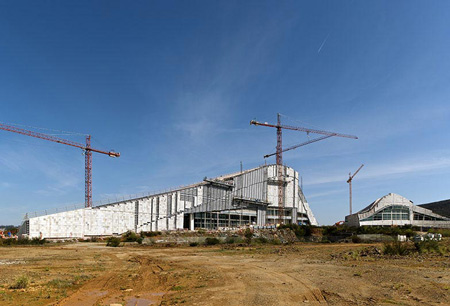
Galician Museum
Conceived as a space for exhibitions to provide an international projection for the heritage and history of Galicia, as well as to simultaneously host international projects, construction of this building is well advanced and it is expected to open during 2011. Its spectacular façade, close to 43 meters high, and over 16,000 m2 of surface area make the Museum one of the most remarkable and unique buildings in the City of Culture of Galicia.
The schedule for the building is based on new concepts and exhibition techniques, including a permanent museum project devoted to the past and present of Galicia and to portray the keys to the future. On a parallel basis, large-format temporary exhibitions will be hosted and supplemented by training and dissemination activities that shall render it an active, fully up-to-date center, with ongoing renewal.
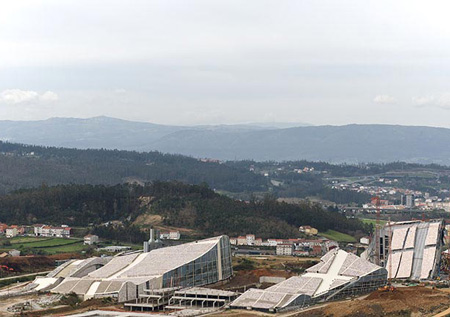
Centre for Performing Arts
Situated at the heart of the City of Culture of Galicia, these facilities are currently undergoing the initial stages of construction.
With the aim to adapt its features to the rapid changes in the world of the performing arts, the Escenario Obradoiro, originally conceived as a Music Theater shall now become the ideal space to host World-class music, drama and audiovisual performances.
It shall promote the projection to the World for Galician output in these fields as well as international exchange and cooperation.
Its main auditorium, with a multi-purpose stage and a seating capacity for 1,300 is to be complemented with other lesser spaces, where small-scale projects may be hosted and adapted to interdisciplinary experimentation and creation, as well as for training and professional exchange activities. Thus, the Escenario Obradoiro shall not only become a space of excellence for exhibition in the field of the performing arts, but also a resource center for creation.
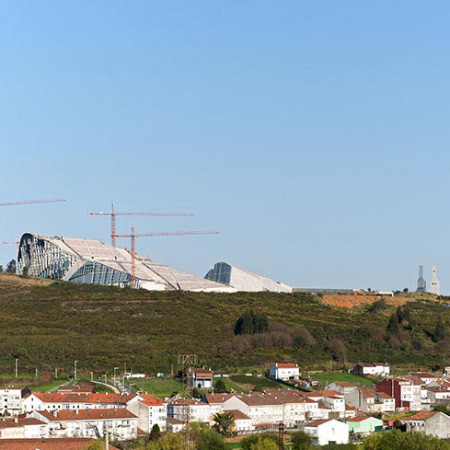
International Art Centre
Situated on the northern side of mount Gaiás and next to the Museum of Galicia, it is undergoing the preliminary stages of construction.
The architectural project, originally designed to host a Museum of Communications, as well as of new technologies in communications and audiovisual production, has been altered to turn it into a center for modern art and the artistic and cultural relations between Latin America and Europe.
Today, given the preliminary stage of the construction process, there is the opportunity to tie in creativity and technology, reconciling, deepening into and expanding the expected content without having to bring changes to the works.
Central Services
Together with the Library and Archives of Galicia, the building for Central Services shall be inaugurated towards the end of 2010. It shall host the management and logistics services for the City of Culture of Galicia.
Covering an area of 7,500 m2, the building is structured on five floors that will host offices, a staff canteen, two smaller and one larger multi-purpose rooms (the latter sized 500 m2),, capable of hosting a variety of events.
Environment
Inspired by the historic city of Compostela, the complex shall be articulated by streets, colonnades, gardens and plazas, transcending the mere concept of a cultural center to become a city with a life of its own, where visitors may not only enjoy the programming scheduled for each building, but also go shopping, eating out or just simply strolling.
Five pedestrian streets link all the buildings to a main central plaza, surrounded by 25 hectares of parkland with walkways for strolling and leisure.
The built-up area includes parking space for around one thousand cars, a main road with access from downtown Santiago and the highway AP-9, enabling access from all over Galicia.
The Hejduk towers also deserve a special mention. They were designed in 1992 by the architect John Hejduk (New York, 1929-2000) to be built as a part of the Botanical gardens in Belvís, a project that never materialized.
When Hejduk passed away, Peter Eisenman suggested to erect them at the City of Culture as a memorial to their author, a friend of his and colleague in The New York Five, the group that best represents the spirit of neo-rationalism in architecture.
See also:
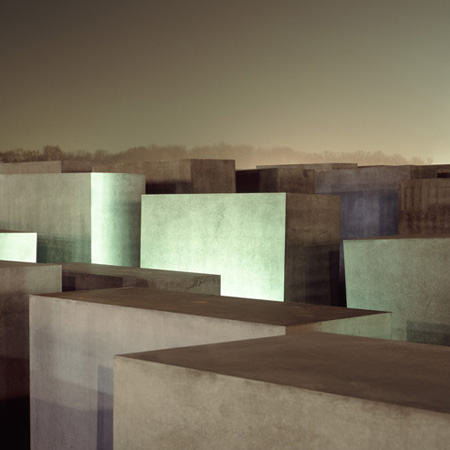 |
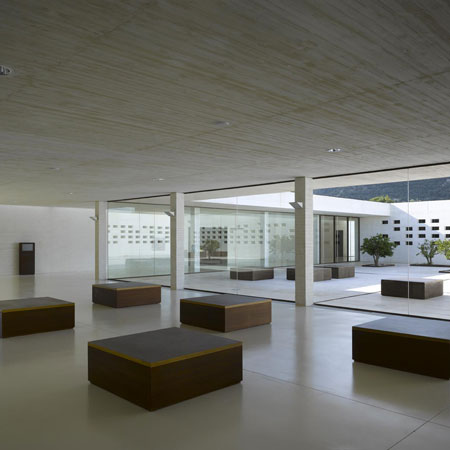 |
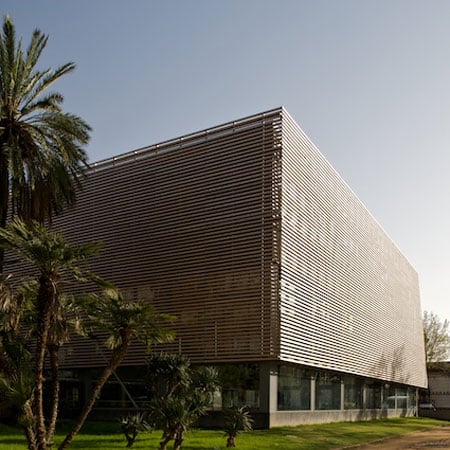 |